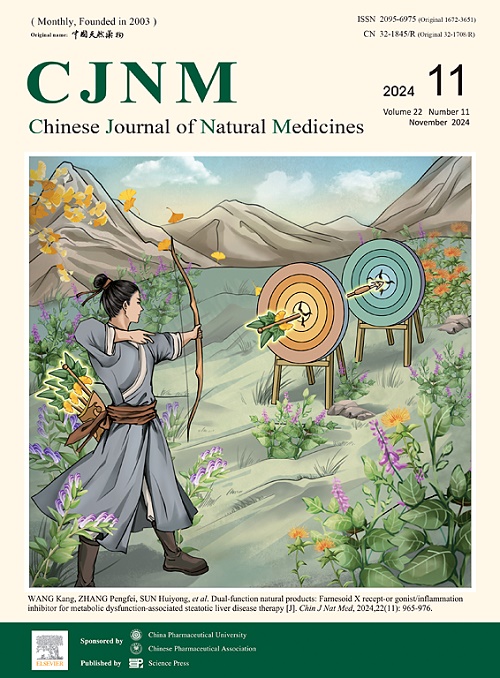A quinolinyl analog of resveratrol improves neuronal damage after ischemic stroke by promoting Parkin-mediated mitophagy
IF 4
2区 医学
Q1 INTEGRATIVE & COMPLEMENTARY MEDICINE
引用次数: 0
Abstract
Ischemic stroke (IS) is a prevalent neurological disorder often resulting in significant disability or mortality. Resveratrol, extracted from Polygonum cuspidatum Sieb. et Zucc. (commonly known as Japanese knotweed), has been recognized for its potent neuroprotective properties. However, the neuroprotective efficacy of its derivative, (E)-4-(3,5-dimethoxystyryl) quinoline (RV02), against ischemic stroke remains inadequately explored. This study aimed to evaluate the protective effects of RV02 on neuronal ischemia-reperfusion injury both in vitro and in vivo. The research utilized an animal model of middle cerebral artery occlusion/reperfusion and SH-SY5Y cells subjected to oxygen-glucose deprivation and reperfusion to simulate ischemic conditions. The findings demonstrate that RV02 attenuates neuronal mitochondrial damage and scavenges reactive oxygen species (ROS) through mitophagy activation. Furthermore, Parkin knockdown was found to abolish RV02’s ability to activate mitophagy and neuroprotection in vitro. These results suggest that RV02 shows promise as a neuroprotective agent, with the activation of Parkin-mediated mitophagy potentially serving as the primary mechanism underlying its neuroprotective effects.
白藜芦醇的喹啉基类似物通过促进帕金森介导的线粒体自噬改善缺血性中风后的神经元损伤
缺血性中风(IS)是一种常见的神经系统疾病,经常导致严重的残疾或死亡。从虎杖中提取的白藜芦醇。调查。(俗称日本虎杖),已被公认为其有效的神经保护特性。然而,其衍生物(E)-4-(3,5-二甲氧基苯乙烯基)喹啉(RV02)对缺血性卒中的神经保护作用仍未得到充分探讨。本研究旨在评价RV02在体外和体内对神经元缺血再灌注损伤的保护作用。本研究采用大脑中动脉闭塞/再灌注动物模型和氧糖剥夺再灌注SH-SY5Y细胞模拟缺血情况。研究结果表明,RV02可以减轻神经元线粒体损伤,并通过线粒体自噬激活清除活性氧(ROS)。此外,在体外实验中,研究人员发现Parkin基因敲除可消除RV02激活有丝分裂和神经保护的能力。这些结果表明,RV02有望成为一种神经保护剂,激活帕金森介导的有丝分裂可能是其神经保护作用的主要机制。
本文章由计算机程序翻译,如有差异,请以英文原文为准。
求助全文
约1分钟内获得全文
求助全文
来源期刊

Chinese Journal of Natural Medicines
INTEGRATIVE & COMPLEMENTARY MEDICINE-PHARMACOLOGY & PHARMACY
CiteScore
7.50
自引率
4.30%
发文量
2235
期刊介绍:
The Chinese Journal of Natural Medicines (CJNM), founded and sponsored in May 2003 by China Pharmaceutical University and the Chinese Pharmaceutical Association, is devoted to communication among pharmaceutical and medical scientists interested in the advancement of Traditional Chinese Medicines (TCM). CJNM publishes articles relating to a broad spectrum of bioactive natural products, leading compounds and medicines derived from Traditional Chinese Medicines (TCM).
Topics covered by the journal are: Resources of Traditional Chinese Medicines; Interaction and complexity of prescription; Natural Products Chemistry (including structure modification, semi-and total synthesis, bio-transformation); Pharmacology of natural products and prescription (including pharmacokinetics and toxicology); Pharmaceutics and Analytical Methods of natural products.
 求助内容:
求助内容: 应助结果提醒方式:
应助结果提醒方式:


